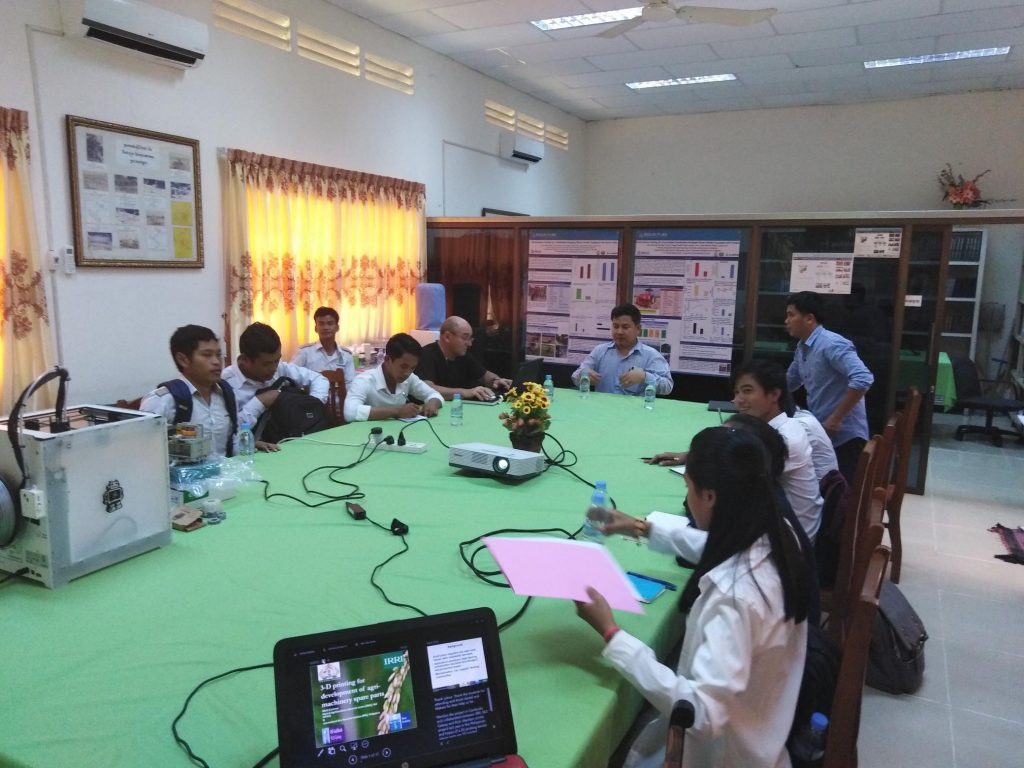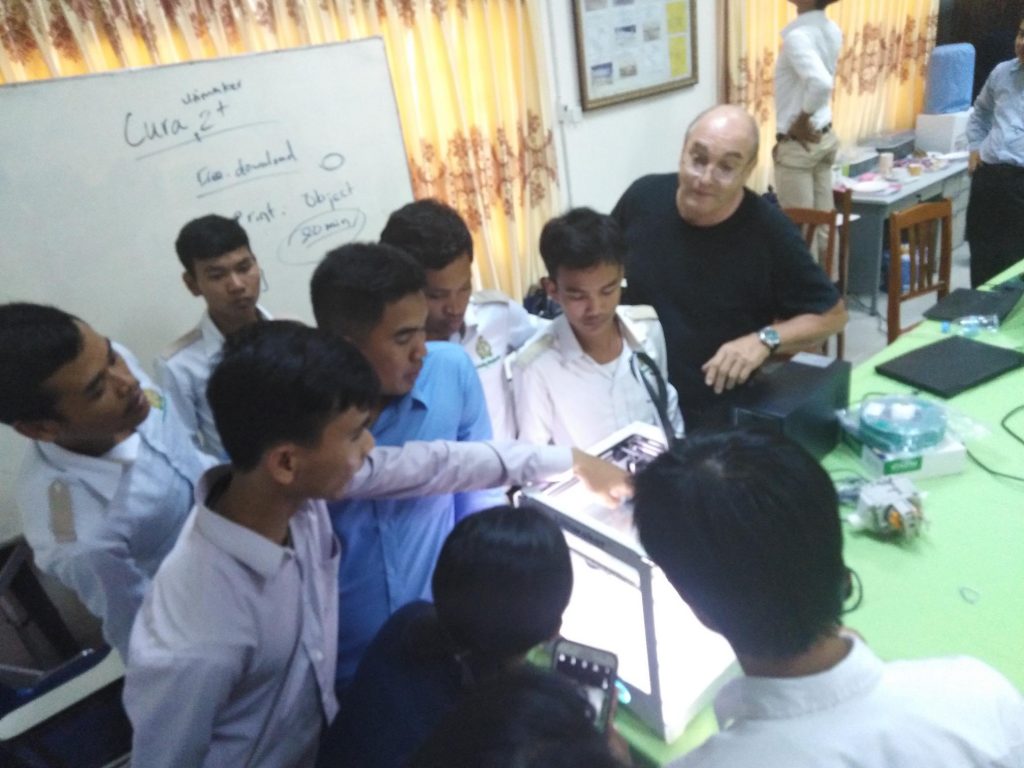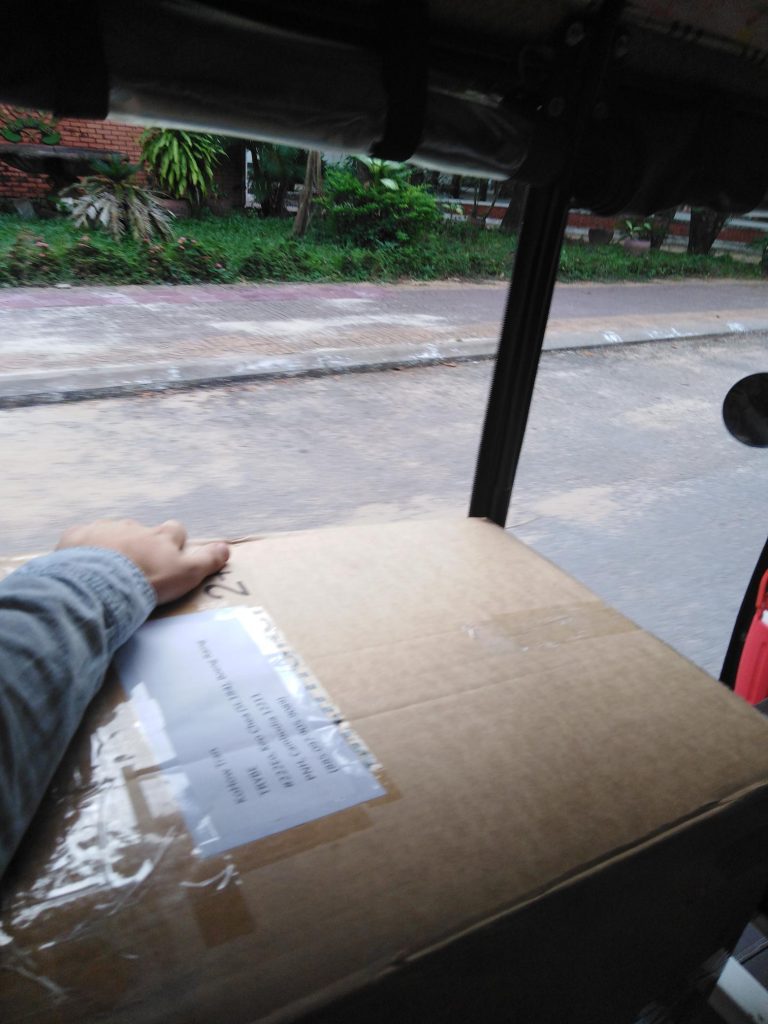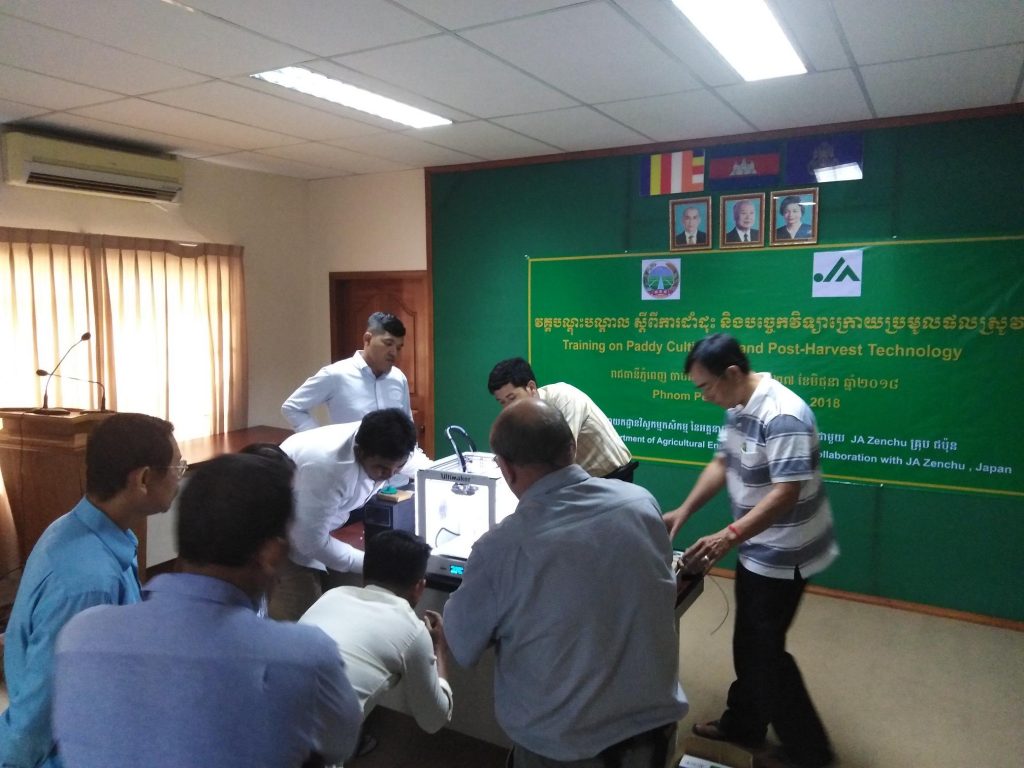3D printing training program
In order to make the training efficient as possible, Gerald Hitzler, Makara Mean, Lytour Lor, Dyna Theng and I met to discuss how the training would be conducted. I designed the schedule and training materials while we all collectively chose dates, venue and a made up a mailing list. We had 36 students to teach, from 2nd to 4th year. Most second year students had no CAD skills so we had to mix the groups up. Four training days were chosen with nine students in each group. We also contacted the department of agriculture where we organised a training session for staff at the mechanisation unit, on the 12th of November. In total 5 training sessions were conducted and 44 people were educated on 3D printing and it’s potential for spare part development.

Figure 1. First group of students ready for 3D printing training program.
On the 26th of October we started the training program at the Royal University of Agriculture, Phnom Pehn where we gave an insightful introduction into 3D printing technologies and how 3D printing could be used to manufacture spare parts for agri machinery. Each training began with a presentation on 3D printing which gave a background on how the technology came about and what it’s currently being used for. We also looked at some potential uses, which included agriculture.

Figure 2. First group of students during the demonstration of the Ultimaker 3D printer.
After the presentation we proceeded to do some demonstrations of the 3D printer. This practical aspect was a great learning experience for everyone. Changing of filament on the 3D printer, calibration of print bed and trouble shooting other issues were explained by Makara and I. After lunch, students were asked to design a small part and were then given free access to use the 3D printer.

Figure 3. On the way to the department of agriculture (45 minutes across Phnom Pehn city) in a Tuk Tuk with a tight grip on the 3D printer!!

Figure 4. Department staff during the demonstaration session on 3D printing.